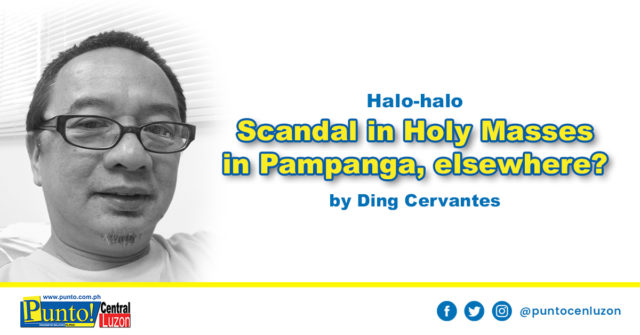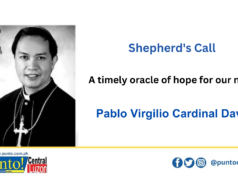HONESTLY, HOW do you feel when, during Mass, the priest asks you to look at the person (stranger or not) beside you and ask: Mahal mo ba ako? Mabango ba ako? Makasalanan ka ba? Naligo ka na ba? Etc.
This is widespread practice at least in Pampanga, making me wonder whether the Archdiocese of San Fernando had at one time mandated or at least recommended this for some purpose.
The practice is at times done at the start of the Mass when the priest requires all to greet the other Good morning or Good afternoon or Good evening. This would appear to be safe, although unnecessary.
But during the homily a dose of such social interaction is often liberally imposed, pushing the faithful to brief bursts of laughter, or shy half compliance, or other reactions that divert from the initial solemnity.
I am fully convinced of the wrongness of it.
It’s not as a matter of ego as of insult that some ignore the socialization call which, I feel, is not even worthy of kindergarten consideration. It’s beyond good reason to impose declarations that could lead to extreme awkwardness, even disrepair of human relationships, as when the next person is physically unattractive or has halitosis when the priest demands that everyone inquire into the beauty or fresh breath of the other.
It’s not good to impose such practice on people who, perhaps by reason of religious zealotry or simple friendly accommodation or being simpletons, would comply with an imposition often outside the scope of fine breeding. Nay, beyond the liturgical peripheries.
It’s a practice that puts to shame Catholicism amid the backdrop of such groups as Ang Dating Daan or Iglesia ni Cristo whose ministers deliver sedate, well prepared, and yet effectively delivered sermons, totally shorn of comedic maneuverings to keep their audiences awake.
Liturgical improvisations flowered after Vatican II. But then, here’s what Zenit.org had to say about such improvisations:
“Before Vatican II there weren’t any surprises when it came to the Mass. Now in many parts of the United States you’ll find priests improvising as they go along. Even archbishops issue pastoral letters directing things at odds with liturgical regulations. As Pope John Paul II noted in a 1998 ad limina address to the American bishops of the western states, not all of the changes in the liturgy “have always and everywhere been accompanied by the necessary explanation and catechesis; as a result, in some cases there has been a misunderstanding of the very nature of the liturgy, leading to abuses, polarization, and sometimes even grave scandal.”
In the Church’s vocabulary, the word “Scandal” means just what it means in the Bible: a stumbling block, something that obstructs a person’s way to the faith (Matt. 18:6–9).
Some would probably say that the socialization practice during homilies conform to the provisions of Vatican II which encourages “full participation” of the faithful in the liturgy.
So, let us recall what St. Pope John Paul II said about this, He said:
“The sharing of all the baptized in the one priesthood of Jesus Christ is the key to understanding the Council’s call for “full, conscious and active participation” in the liturgy (Sacrosanctum Concilium, 14). Full participation certainly means that every member of the community has a part to play in the liturgy; and in this respect a great deal has been achieved in parishes and communities across your land. But full participation does not mean that everyone does everything, since this would lead to a clericalizing of the laity and a laicizing of the priesthood; and this was not what the Council had in mind. The liturgy, like the Church, is intended to be hierarchical and polyphonic, respecting the different roles assigned by Christ and allowing all the different voices to blend in one great hymn of praise.”
More explicit was Pope Emeritus Benedict XVI who said: “Wherever applause breaks out in the liturgy because of some human achievement, it is a sure sign that the essence of liturgy has totally disappeared and been replaced by a kind of religious entertainment.” The statement obviously also applies to extreme socialization practices.
He added: “We do at least need a new liturgical consciousness, to be rid of this spirit of arbitrary fabrication. Things have gone so far that Sunday liturgy groups are cobbling together the liturgy for themselves… The most important thing today is that we should regain respect for the liturgy and for the fact that it is not to be manipulated.”
This is not to say that humor is out of place in the liturgy, particularly in the homily. Why, Venerable Archbishop Fulton Sheen often started his sermons with funny anecdotes. One time, he related the case of a diabetic patient who was told by his doctor that one of his legs had to be amputated; soon after the amputation, the doctor arrived with a bad news and a good news. The bad news was that the amputated leg was the wrong one; the good news was that the remaining leg was regaining health. And then Fulton went on seriously with his captivating, mesmerizing homily that left his audience knowing God, His Church and living well better.





